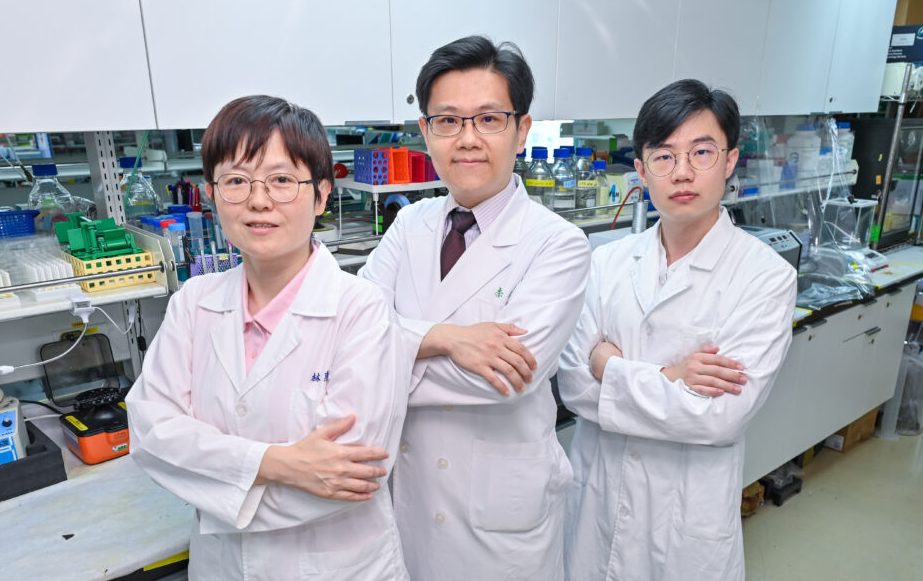Dr. Chiu (Professor of National Yang-Ming University, Department and Institute of Pharmacology) from the Medical Research Department of Taipei Veterans General Hospital has been receiving funding from the Ministry of Science and Technology under the program “Innovation and Application of Nanoscience, a Thematic Program.” In cooperation with National Yang-Ming University and the University of California, Los Angeles, is research group has successfully utilized the “CRISPR/Cas 9” genetic editing technique developed by the winner of the Nobel-Prize in Chemistry 2020 as medical tool. Along with a nano gene delivery system, the team has developed a “New Precise Genetic Editing Treatment Innovative Platform” that can be applied to the genetic repair of systemic diseases of the blood. The research results were published in Science Advances on Oct. 23 and both domestic and foreign patents have been applied for. This is an affirmation of the excellent quality of medical science in Taiwan.
Chiu remarked that in a normal adult, hemoglobin (Hb) is a tetramer that consists of two α-globulin and two β-globulin protein molecules (α2β2). Hemoglobin is able to combine with oxygen and its major function is to deliver oxygen from the lungs to the various other tissues in the body. Clinically, the most common blood diseases are sickle cell disease and beta-thalassemia, which are caused by mutations in the HBB gene that encodes the β-globin protein. Such mutations lead to either structural defects in the β-globulin protein or a decrease in the number of β-globulin molecules available, which in turn results n a decrease in α-globulin. The current treatment includes blood transfusions or a bone marrow transplantation, both of which only alleviate the symptoms, but do not cure the disease.
Materials used for photo detectors have unique properties. Some materials are only responsive to light of a specific wavelength; this means that high energy ultraviolet and visible light, which are readily absorbed, are often used for devices when appropriate, but infrared light photo detectors have remained a challenge. Professor Chattopadhyay of National Yang-Ming University Institute of Biophotonics and his PhD student Sandip Ghoshmade have created a 4.5 micron-photo detector by combining MoS2 and up-conversion nanoparticles. This photo detector is able to absorb a wide range of wavelengths from the ultraviolet to the infrared, and has an improved conversion efficiency for infrared light compared to the past.
To overcome this problem, Taipei Veterans General Hospital, National Yang-Ming University and University of California, Los Angeles have cooperated with the support of the Ministry of Science and Technology. Self-assembly supramolecular nanomolecules and nanoprobe technology have been combined with the CRISPR/Cas 9 genetic editing technique to allow highly efficient entry of the complete HBB gene into blood cells. This is a safe and universal treatment plan for the previously-mentioned patients and verification of the gene delivery in vitro into blood cells and precise editing has been completed.
These important research results encompass many technical breakthroughs and proof of concept steps. The first is the combination of two nano techniques to create a delivery platform that allows the CRISPR/Cas 9 genetic editing material to be transported into blood cells. The second is the use of a non-viral plasmid that is able to provide highly efficient CRISPR/Cas9 genetic editing of long DNA sequences. These research findings are right now subject to domestic and foreign patent applications.
Chiu remarked that the “CRISPR/Cas9 genetic editing technique” is capable of efficiently and accurately modifying of the DNA present in microorganisms, plants, and animals, including humans, via the use of biomolecular techniques. Earlier, their team integrated self-assembly supramolecular nanoparticles and CRISPR/Cas9, and by doing so greatly increased their genetic editing efficacy (Advanced Science 2020 April) and used this approach for the treatment of X-Link Retinoschisis, XLRS. This time, as a further breakthrough compared to their previous research, they have successfully developed a “New Precise Genetic Editing Treatment Innovative Platform” using “Polymer nanoparticle wire + nanoprobe” to deliver CRISPR/Cas9 vectors into host cells and living tissue. This creates a new direction for the treatment of genetic diseases of the blood and hereditary retinal diseases. In the future, it is hoped to apply the research findings to patients and bring them the hope of a cure for their genetic diseases.
Photo: Secretariat Office





